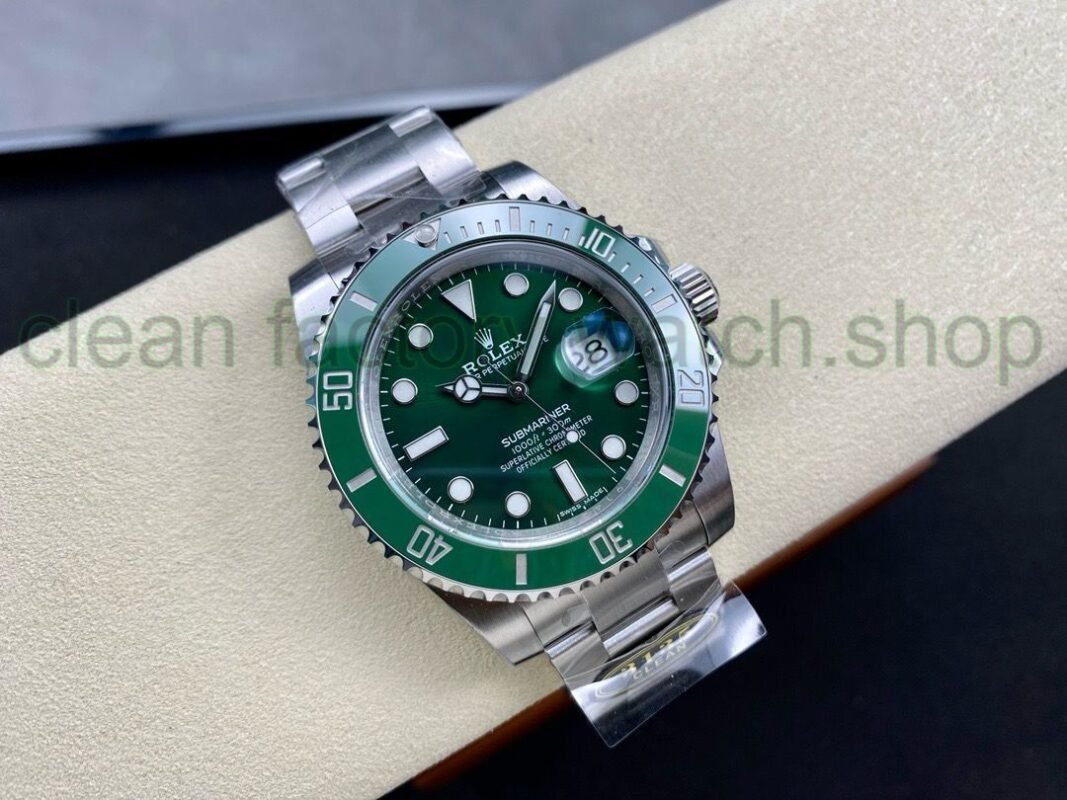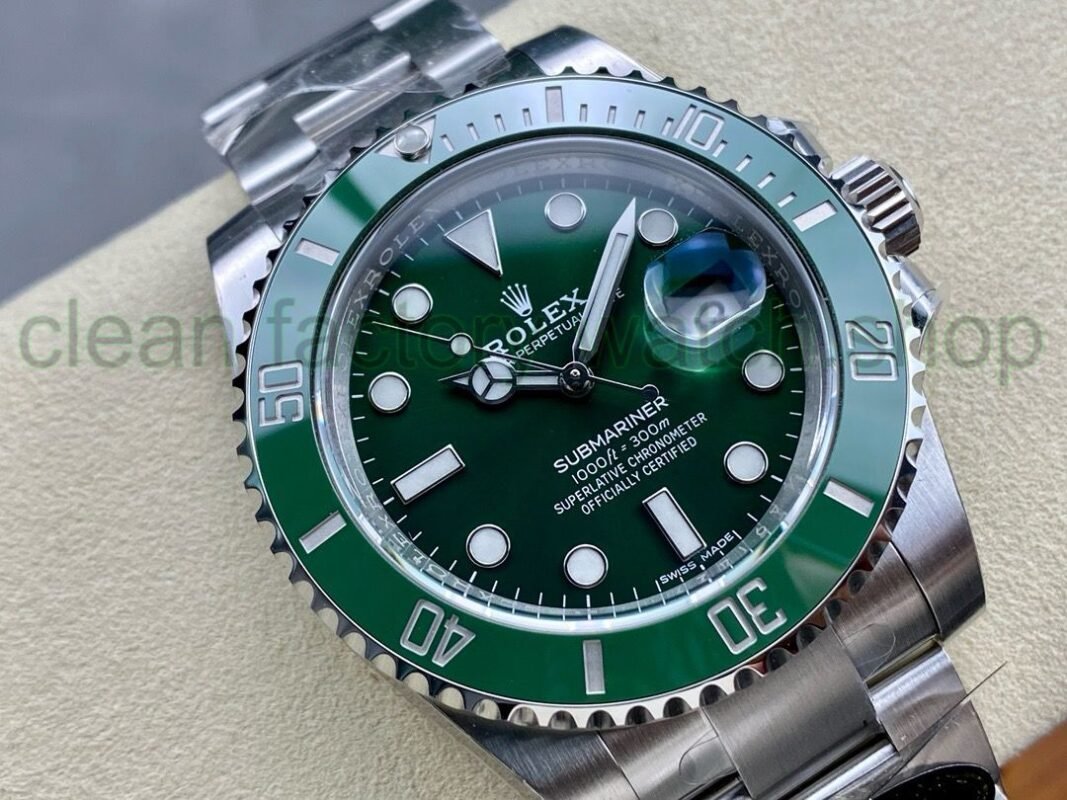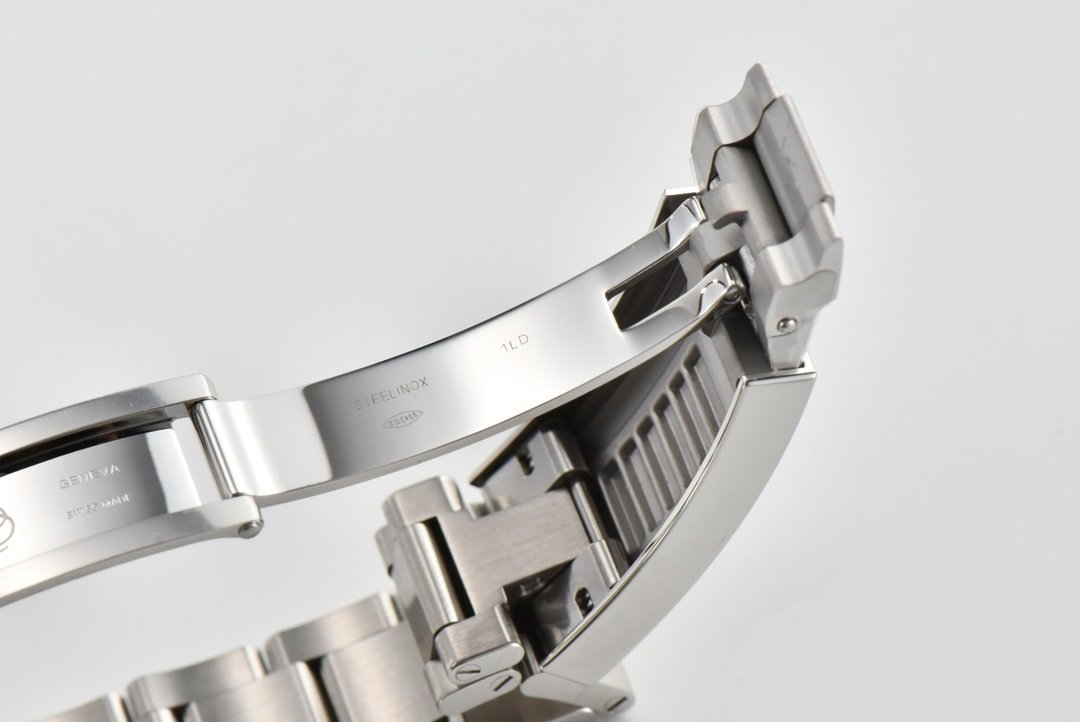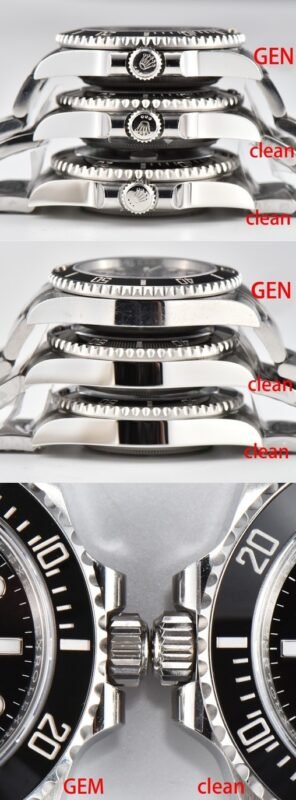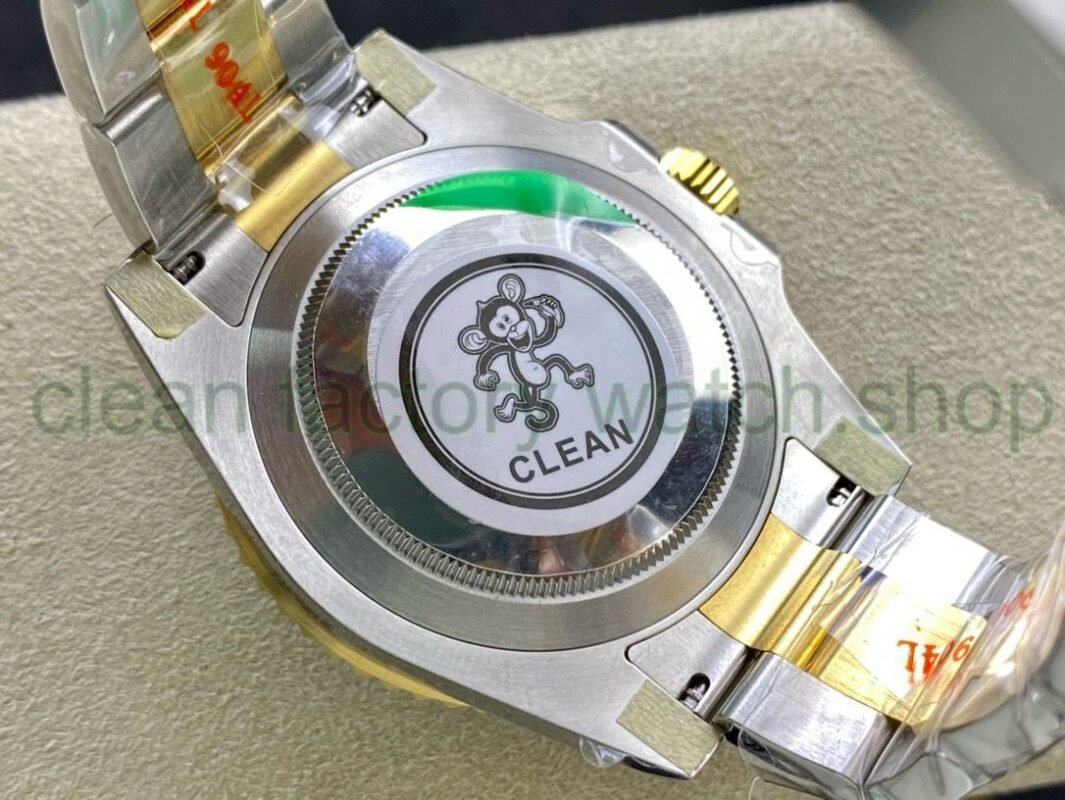Blog
Clean Factory Watches: Precision Craftsmanship Meets Sustainability

In an era where the clamor for sustainability echoes loudly across industries, a new face of horology emerges, marrying time-honored craftsmanship with an unwavering commitment to the surroundings. Enter the realm of Clean Factory Watches, where every tick of the second hand represents not just precision engineering, but also a pledge to reduce ecological footprints.As watch enthusiasts and eco-conscious consumers converge, these timepieces offer a harmonious blend of style, durability, and sustainability. In this exploration, we delve into the innovative practices and principles that define Clean Factory Watches, showcasing how the art of watchmaking is evolving to meet the demands of a new generation, one that values both exquisite design and a greener future. Join us on this journey as we uncover the stories behind these remarkable creations and the visionaries who make them possible.
Table of Contents
- Understanding the Art of Precision in Clean Factory Watchmaking
- Innovative Materials and Techniques for Sustainable Timepieces
- Balancing Style and Functionality in Eco-Friendly Watch Designs
- Recommendations for Investing in Sustainable Luxury Watches
- Q&A
- Final Thoughts
Understanding the Art of Precision in Clean Factory Watchmaking
In the realm of clean factory watchmaking, precision is not merely a goal but an essential ethos that shapes every aspect of the process. Each watch, weather it features an intricate movement or a minimalist design, showcases the dedication to meticulous craftsmanship. Factors contributing to this precision include:
- Advanced Technology: Incorporation of state-of-the-art machinery ensures that every component is crafted with unrivaled accuracy.
- Quality Materials: Selective use of premium materials enhances the longevity and reliability of each timepiece.
- Skilled Artisans: Experienced watchmakers meticulously oversee assembly, ensuring that every detail meets rigorous standards.
moreover, this unwavering commitment to precision intertwines seamlessly with sustainability practices. Clean factory watchmaking often prioritizes:
- Eco-friendly Materials: Sourcing sustainable elements reduces the ecological footprint of watch production.
- Efficient Production Processes: Streamlined workflows minimize waste and energy consumption.
- Longevity of Products: Craftsmanship aimed at durability ensures that watches have a reduced need for replacement,aligning with sustainable consumerism.
Innovative Materials and Techniques for Sustainable Timepieces
As the world shifts towards sustainable practices, the watchmaking industry is embracing innovative materials and techniques that align with eco-friendly values. Notable brands are now incorporating recycled metals and bio-based composites, considerably reducing their carbon footprint without compromising on quality or aesthetics. These new-age materials not only promote sustainability but also offer unique visual and tactile experiences, appealing to environmentally conscious consumers. By using materials like sustainable leather alternatives and plant-based resins, manufacturers are redefining luxury timepieces and setting a precedent for future designs.
Moreover, advanced manufacturing techniques are revolutionizing the production of timepieces, paving the way for more sustainable operations. 3D printing enables precision crafting with minimal waste, allowing for more complex designs and customization options. Additionally, solar-powered movements are becoming a standard feature, diminishing the reliance on traditional battery systems and enhancing the longevity of watches.Below is a table highlighting the key innovative materials and techniques being utilized:
| Material/Technique | Description |
|---|---|
| Recycled Metals | Utilizes metals sourced from repurposed watches, reducing mining impact. |
| Biodegradable composites | Made from organic materials, these composites break down naturally. |
| 3D Printing | Innovative manufacturing that creates parts layer by layer, minimizing waste. |
| Solar Technology | Watches powered by solar energy, decreasing battery waste. |
Balancing Style and Functionality in Eco-Friendly Watch Designs
In the world of timepieces, achieving the perfect balance between aesthetics and usability is no small feat, especially for those brands that prioritize environmental duty. Eco-friendly watches are not only a fashion statement but also a testament to sustainable craftsmanship. By utilizing recycled materials,biodegradable components,and energy-efficient manufacturing processes,these designs reflect a commitment to the planet while still catering to the discerning tastes of consumers. Each piece is intricate and stylish, echoing modern trends while being mindful of its ecological footprint.
Moreover, the functionality of these timepieces goes hand-in-hand with their design ideology. Features such as water resistance, durable straps made from organic fabrics, and solar-powered movements ensure that eco-friendly watches are as practical as they are beautiful. When consumers opt for these watches, they enjoy the following benefits:
- Durability: Crafted to withstand the rigors of daily life without compromising on style.
- affordable Luxury: Premium designs at competitive prices, making sustainable fashion accessible.
- Unique Styles: Limited edition pieces that stand apart from mass-produced alternatives.
To illustrate the variety in eco-conscious designs, consider the accompanying table showcasing some popular eco-friendly materials and their features:
| Material | Feature |
|---|---|
| Recycled Stainless Steel | Corrosion-resistant & lightweight |
| Natural Rubber | Biodegradable & sustainable |
| Wood from sustainable Forests | Unique grain patterns & eco-friendly |
Recommendations for Investing in Sustainable Luxury Watches
When considering an investment in sustainable luxury watches, the discerning buyer should focus on brands that prioritize ethical sourcing of materials and environmentally friendly production processes. Look for timepieces made from recycled metals and sustainable materials such as ethically-sourced leather or innovative fabrics derived from organic resources. It’s essential to research the brand’s supply chain openness, ensuring they adhere to fair labor practices and demonstrate a commitment to reducing their carbon footprint in manufacturing.
Additionally, consider watches that come with a certification of sustainability or have received accolades for their eco-friendly practices. Here are some key factors to evaluate when making your decision:
- Watch Movement: Opt for brands that utilize renewable energy sources for their movements, such as solar-powered or kinetic options.
- Longevity and Repairability: Invest in brands that offer warranties and encourage repairs to extend the life of the watch.
- Minimalist Packaging: Prefer companies that adopt sustainable packaging solutions, reducing waste and environmental impact.
Q&A
Q&A: Clean Factory Watches: Precision Craftsmanship Meets Sustainability
Q1: What are Clean Factory Watches, and how do they differ from traditional watches?
A1: Clean Factory watches represent a new wave in horology, merging the artistry of traditional watchmaking with a commitment to sustainability. Unlike conventional watches that often rely on non-sustainable materials and processes, Clean Factory Watches emphasize eco-friendly practices, utilizing recycled metals, conflict-free gemstones, and responsible manufacturing techniques.This approach ensures that every timepiece not only reflects precision craftsmanship but also embodies a conscientious ethos.
Q2: Why is sustainability important in the watchmaking industry?
A2: The watchmaking industry has historically faced criticism over its environmental impact, especially regarding resource extraction and waste production. Sustainable practices in watchmaking are crucial for reducing the carbon footprint, conserving natural resources, and ensuring ethical sourcing. By prioritizing sustainability, manufacturers not only protect the environment but also resonate with consumers who are increasingly aware of social responsibility, creating a more ethical ecosystem in the luxury sector.Q3: What craftsmanship techniques are employed in Clean Factory Watches?
A3: Clean factory Watches employ time-honored craftsmanship techniques that blend innovation with tradition.Skilled artisans engage in meticulous handwork where each component is carefully crafted and assembled. Techniques such as hand-polishing, intricate engraving, and the use of durable, sustainable materials showcase the dedication to precision. Coupled with modern technology, these practices ensure that each watch is not only visually stunning but also built to last, marrying luxury with longevity.
Q4: Can you explain the materials commonly used in Clean Factory Watches?
A4: Clean Factory Watches favor a variety of sustainable materials. Recycled stainless steel is frequently enough utilized for cases and bands, while biodegradable options may also be available in certain models. Additionally, natural rubber, sustainably sourced wood, and ethically mined stones contribute to the aesthetics and functionality of the watches. By selecting these materials, manufacturers reduce environmental impact while maintaining high-quality standards.
Q5: Who are the primary consumers of Clean Factory Watches?
A5: The primary consumers of Clean Factory Watches include eco-conscious individuals who appreciate luxury but are also invested in sustainability. This market spans a diverse demographic, including millennials and Gen Z, who prioritize ethical consumption in their purchasing decisions. Additionally, collectors and watch enthusiasts who value craftsmanship and innovation are drawn to these timepieces, recognizing their uniqueness and story.
Q6: What impact do Clean factory Watches have on the environment?
A6: The environmental impact of Clean Factory Watches is significantly lower than that of traditional timepieces. By using recycled materials and minimizing waste during production,these watches help conserve natural resources and reduce pollution. Moreover, sustainable practices extend to packaging and distribution, ensuring that the entire lifecycle of the watch is environmentally considerate, promoting a circular economy in the luxury watch market.
Q7: How can consumers assess the sustainability of a watch brand?
A7: Consumers can assess the sustainability of a watch brand by examining its sourcing practices, production methods, and transparency. Reviewing brand certifications, such as Fair Trade or sustainability indexes, can provide insights into ethical practices. Engaging with a brand’s storytelling aspect, including their commitment to community and environmental stewardship, can also inform consumers’ choices. Brands that openly share their sustainability goals and progress foster a sense of trust and connection with discerning buyers.
Q8: Are Clean Factory Watches financially accessible?
A8: While Clean Factory Watches are positioned within the luxury segment,many brands are actively working to offer a range of price points. By focusing on sustainable practices, some manufacturers have made strides to balance quality and affordability, catering to a broader audience. As consumer demand for eco-friendly products grows, it’s likely that the market will continue to evolve and become more accessible, inviting a wider range of individuals to invest in ethically-made timepieces.
Clean Factory Watches embody a beautiful fusion of artisanal excellence and sustainability, appealing to a new generation of conscious consumers who value longevity, craftsmanship, and environmental integrity.
Final Thoughts
In a world increasingly attuned to the rhythms of sustainability, clean factory watches represent more than just a timekeeping accessory; they embody a harmonious blend of precision craftsmanship and environmental consciousness. As we have explored, the intricate processes behind these timepieces are not only about aesthetic appeal and functionality but also reflect a commitment to reducing our ecological footprint.
By choosing clean factory watches, consumers are not only investing in durability and quality but are also making a statement about their values in a rapidly changing global landscape. As the watch industry continues to innovate, it holds the potential to led the charge toward a more sustainable future, reimagining what luxury means in a world that prioritizes the health of our planet.
So, as you consider your next watch purchase, take a moment to reflect on the craftsmanship and sustainability woven into the fabric of clean factory timepieces. Embrace the opportunity to wear somthing that marries artistry with ethical responsibility—because every tick of the second hand is a reminder that time itself is a precious resource, and so is our planet.

